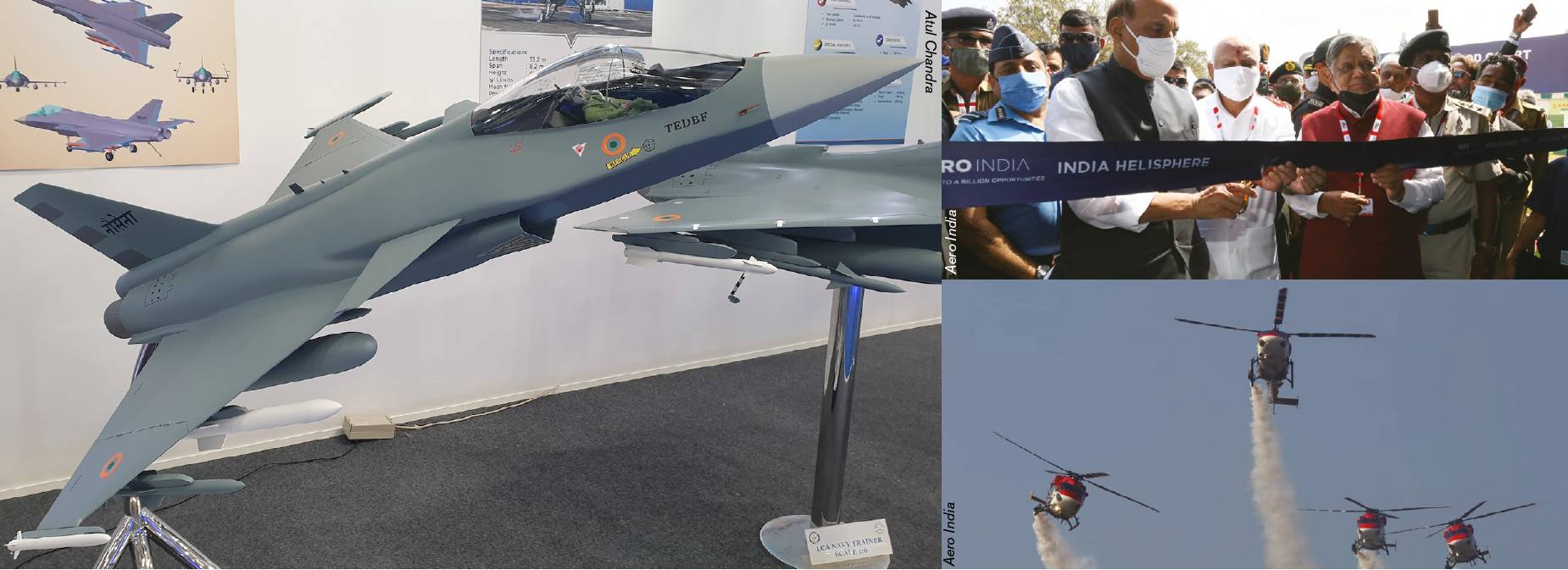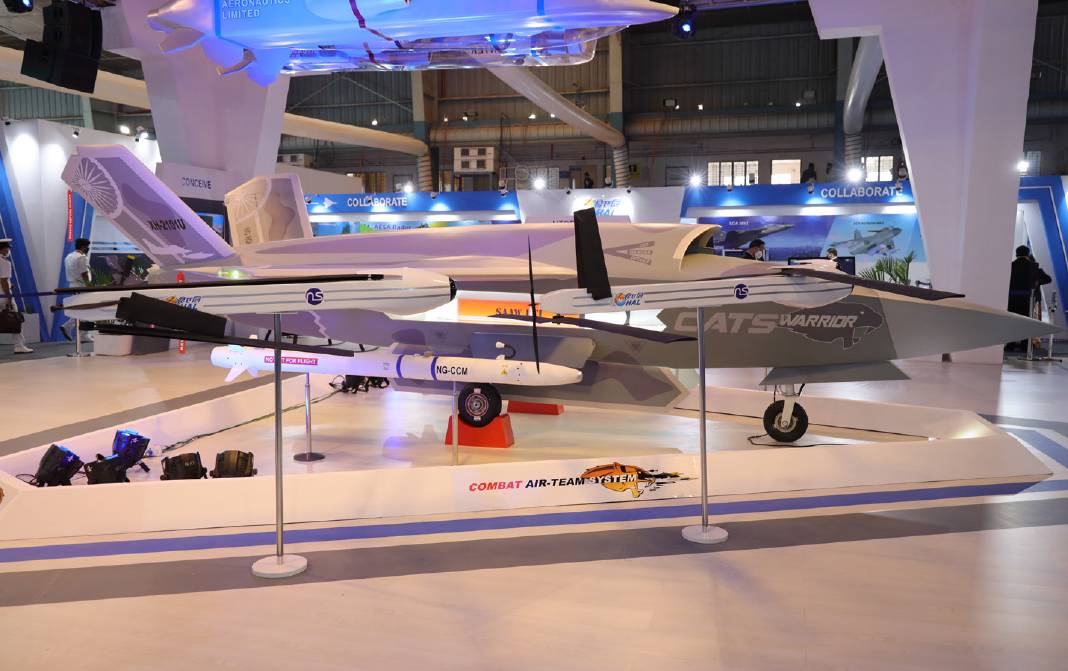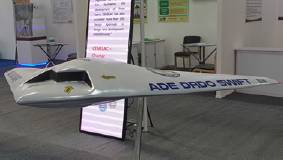DEFENCE Aero India Show report
Soaring aspirations
ATUL CHANDRA reports from India’s biggest airshow and aerospace exhibition, Aero India 2021, held on 3-5 February at IAF Air Force Station, Yelahanka, Bengaluru, which saw new fighters and ‘Loyal Wingmen’ showcased.
 Clockwise from far left: Twin Engine Deck Based Fighter (TEDBF); inaugural ceremony of Aero India 2021 in February 2021; inaugural ceremony rotorcraft flying display.
Clockwise from far left: Twin Engine Deck Based Fighter (TEDBF); inaugural ceremony of Aero India 2021 in February 2021; inaugural ceremony rotorcraft flying display.
India’s burgeoning indigenous military aviation portfolio was the highlight of the 13th Aero India, held in February, and showcased the tremendous strides made by its indigenous aerospace industry since 1996, when the first airshow was held. India’s economic rise over the last 25 years, coupled with an unwavering desire towards indigenous military aviation capability, is now beginning to yield results. Aero India also showcased India’s burgeoning start-up culture, now increasingly evident in the aerospace sector. While many of the concepts and offerings from these companies appear promising, regular funding and timely conclusion of projects, an anathema in Indian defence procurement, could test their resolve.
India presently has four fighter programmes under way in the light combat aircraft (LCA) ‘Tejas’ Mk-1A, LCA AF Mk-2 medium weight fighter, 4.5 gen advanced medium combat aircraft (AMCA) and newly revealed twin-engine deck based fighter (TEDBF). State-owned airframer Hindustan Aeronautics Limited (HAL) is also completing development of the Hindustan Turbo Trainer 40 (HTT-40) basic trainer and has revived the moribund Hindustan Jet Trainer 36 (HJT-36) ‘Sitara’ intermediate jet trainer (IJT). Apart from this, it is completing development of the light utility helicopter (LUH), light combat helicopter (LCH) and has just commenced work on the 10t indian multirole helicopter (IMRH).
Aero India signalled the end of the Tejas LCA’s torturous development saga with a Rs480bn order for 83 Tejas Mk-1A fighter jets (73 single seat and 10 twin seat). Deliveries to the Indian Air Force (IAF) are to begin in 2024 and will likely be completed by 2030. HAL had earlier received orders for 40 Tejas Mk-1 aircraft. The new Tejas Mk-1A aircraft feature an Israeli Elta AESA radar, in-flight refuelling capability, ASRAAM close combat missiles and the Israeli Derby BVRAAM, along with numerous other improvements.
“One of the major strengths of Tejas is its FBW system. It is wonderfully designed and the rates that it generates are extremely crisp and as per the demands put forth by the pilot. It provides the pilot with complete control and the ability to exploit the aircraft in its entire flight regime,” says Group Captain Samrath Dhankhar, former CO of 45 Squadron which operates Tejas Mk-1s.
 The enormous costs of developing modern fighter aircraft do not appear to have swayed Indian ambitions and strong government backing means that despite pandemic related budget constraints, funding is secure. The most ambitious of the trio under development is the advanced medium combat aircraft (AMCA) for the IAF, which is being designed for stealth and features an internal weapons bay.
The enormous costs of developing modern fighter aircraft do not appear to have swayed Indian ambitions and strong government backing means that despite pandemic related budget constraints, funding is secure. The most ambitious of the trio under development is the advanced medium combat aircraft (AMCA) for the IAF, which is being designed for stealth and features an internal weapons bay.

